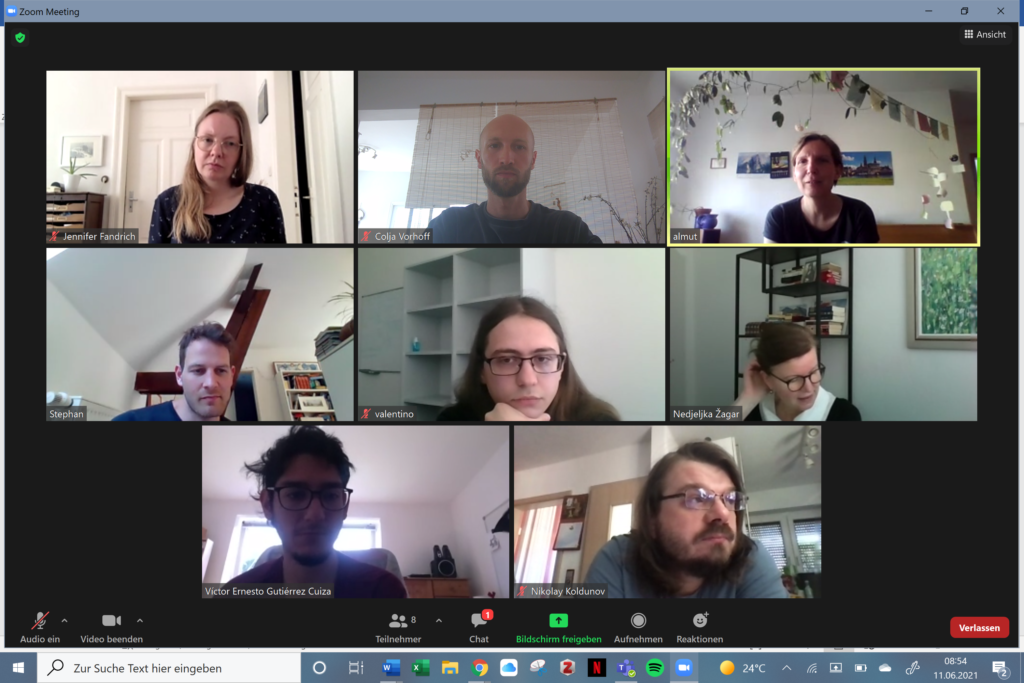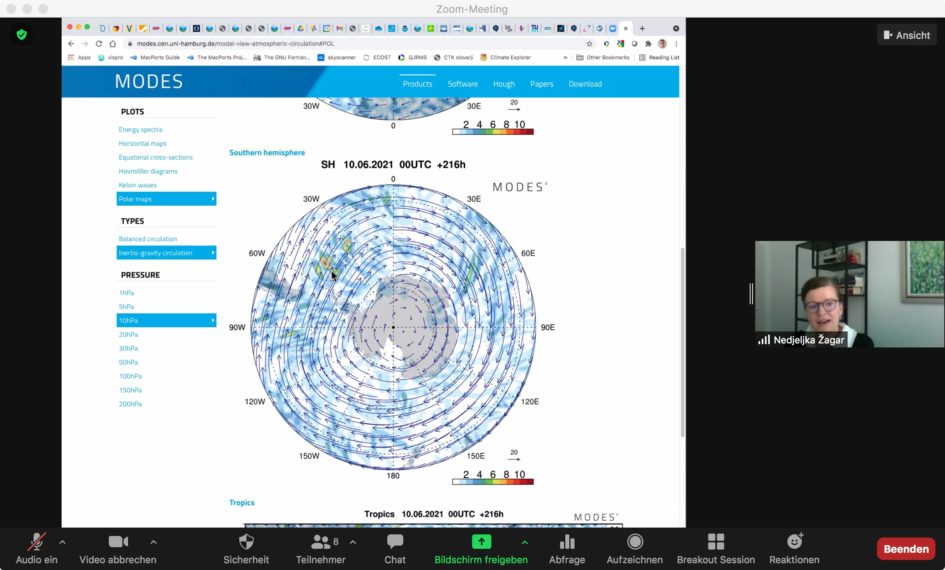Creating an “Earth Symphony” from TRR 181 Data
TRR 181 scientists meet online with composer Cuiza from HfMT Hamburg to discuss music project that aims at translating atmospheric and oceanographic data into sound waves
By Colja Vorhoff
On Friday, June 11, participants of the TRR 181 outreach project “Art meets Science: ENERGY TRANSFERS” met in a virtual meeting to discuss possibilities for the implementation of a music project in this context with music student and composer Víctor Ernesto Gutiérrez Cuiza from Hochschule für Musik und Theater Hamburg.
The idea of the musical project is to create an “Earth Symphony” from Earth System scientific data of the TRR 181. Therefore, the idea is to translate global atmospheric and oceanic data into oscillations, manifesting as frequencies or amplitudes, before these again are translated into sound waves. By applying this process, the project wants to make it possible to hear the state of the atmosphere and the ocean at any given time. Central to the artist´s idea of “music in space” is to feel how waves are moving in space and by this sensual experience learning about the behavior of waves and the interactions between ocean and atmosphere as well as making paramount processes such as climate change experienceable through music.

While during the Kick-off meeting the focus was more on atmospheric data regarding the music project provided by Prof. Nedjeljka Žagar and her PhD student Valentino Neduhal, this meeting also introduced some oceanographic contents provided by TRR 181 scientists Stephan Juricke and Nikolay Koldunov. During the meeting, the participants further discussed ideas on how to translate wave energy motion into music.
One proposal was to associate different melodies, tone keys or dynamics such as crescendo and descrecendo with different parts of the wave and energy spectrum. Therefore, Valentino Neduhal already provided the artist with two two-dimensional atmospheric matrice data sets on Rossby and Inertia-gravity part of energies, that already could be experimented with. While the first data sets were focused on energy of vertical motions, future data sets will also focus on the energy of horizontal motions, before in a further step ocean data that corresponds will then be assimilated. Almut Gassmann brought in the idea, that climate change could be integrated musically as a main theme by creating discords and disharmonies. This way musical elements can directly represent the imbalance of Earth’s climate system through global warming.

All in all, a range of ideas on how to “musicize” atmospheric and oceanographic data was introduced, be it by assigning musical dynamics or melodies to the different types of waves or separating data into amplitudes and vibrations in order to transfer it into music. While the meeting gave the participants a chance to discuss on all these ideas and getting familiar with the multiple ways of translating waves into music – we all are excited about the further progress of this project!
About the outreach project ENERGY TRANSFERS.

